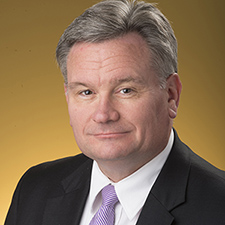 Back to Resources
Back to Resources
In recent quarters, manufacturing has been subject of a tug of war between economic trends that support the re-shoring of foreign production and the adverse effect of recent strength in the US dollar.

Over the past decade, it has become clear that increased global trade has led to some narrowing of the spread in labor costs across countries. Specifically, wages in Asia have been rising much faster than they have in the United States. Indeed, a 2011 report by Boston Consulting Group estimated wages and benefits were increasing at a 15% to 20% pace in China. Their analysis also predicted that the labor cost advantage enjoyed by Asian producers in the past decades would be cut by nearly a third between 2011 in 2015. Such an outcome would not be unexpected, but rather would mirror what would be predicted by modern trade theory – that increases in trade leads to an equalization of the price of business inputs, including labor.
Further, as energy costs have drifted down over the past few years, US manufacturers have enjoyed reduced production and distribution costs. While it is widely recognized that modern manufacturing tends to be more capital intensive, is not always acknowledged the degree to which energy usage has risen with modern automation. In some production facilities, the cost of energy equals, and in some cases exceeds, the cost of labor for converting raw materials into final product. As natural gas prices drift downward, falling below two dollars per million BTU earlier this year, this should translate into lower prices for the electricity that is produced by natural gas.
The importance of energy costs in making decisions regarding where to locate production has been acknowledged by Georgia policy analysts. Subsequent to the tax reform efforts of 2010, Georgia’s leadership moved to exempt all energy used in manufacturing and agricultural interest from the state’s sales tax. Most economic development professionals considered this policy move as a big win – not only recruiting new manufacturers to move to the state, but also in retaining and supporting expansion of existing industries as well.
However, despite the positive effects of a narrowing labor cost gap and the general downward movement in energy prices, manufacturing has been sailing into headwind over the last 24 months. Since President Nixon suspended convertibility of the dollar in 1971, it has been clear that fluctuations in the value of the dollar against our major trading partners is an important determinant of foreign trade and manufacturing activity. When the dollar shed nearly a third of its value between 2002 and 2006 there was a clear stimulative effect for US exports.
Likewise, when the dollar rose in value by nearly 20% between mid-2014 and early 2016, the effect on exports was predictable. Over the last six quarters, foreign trade has cut, on average, a half percent off GDP growth. Much of this pullback has been felt in the manufacturing industry.
The manufacturing component of the Federal Reserve’s Industrial Production index fell in half of the preceding 18 months. Further, the Institute of Supply Management’s monthly PMI index dipped below the 50 threshold for the five months between October 2015 and February 2016. It seems likely that the strength of the dollar is one of the culprits in this recent softness.
However, in early 2016, the dollar weakened and the Purchasing Manager’s Index (PMI) reversed direction, posting five months above the 50 threshold. While the dollar rallied again in July as global capital flocked to the US in the aftermath of the “Brexit” vote, these capital flows may moderate throughout the balance of the year and allow the dollar to gradually work back down to more trade-friendly levels. In the short run, manufacturers will likely still feel the pressures of the strong dollar, but the longer run trends toward returning domestic production to the United States should remain in place.
By: Roger Tutterow, Ph.D., Professor of Economics and Director, Econometric Center, Coles College of Business, Kennesaw State University
How can we help?
If you have any questions and would like to connect with a team member please call 404-874-6244 or contact an advisor below.
CONTACT AN ADVISOR
